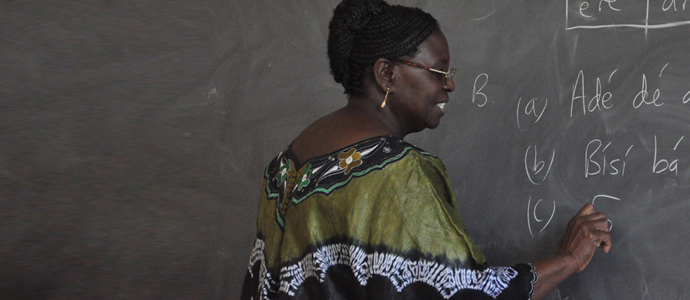At first, it was not clear to me what “open access” meant. I had to research the implications of this new form of publishing, particularly with the multimedia aspect (foreign language text along with its audio files). I was not sure what types of rights I would be giving up. As time went by, I decided making Yoruba language and culture available at little or no cost to the wider world, not just to my students, gave learning a higher meaning.
Open access–as it relates to foreign language publishing–is both an educational and cultural shift. Not only can users (learners) download a foreign language teaching material freely, they can also print and bind the hard copy as some of my students have chosen to do. They can copy or share the materials with fellow students and other people. As a pioneering effort, African language and less commonly taught language (LCTL) learning materials, such as Yoruba Ye Mi, benefit from publishing through open access.
The goal is to bring Yoruba to the level of French, German, and Spanish. We are really not that far because of programs like Yoruba Ye Mi that incorporate technology, such as QR codes and multimedia, to enhance learning. Other programs out there are much more expensive. And there are no other OER in the Yoruba language. Open textbooks will help to promote the language and the culture. Open access publishing with public funding goes a long way to alleviate the cost of publishing on the part of the author and the publisher. It also allows for the materials to be more widely distributed.
The Yoruba community at UT Austin recorded the audio files featured on the website; these were enrolled and former graduate students, my Fulbright teaching assistants, and myself. This collaboration was an integral part of the textbook. Initially, the audio files were meant to help learners with pronunciation, particularly because of the so-called “mythically difficult Yoruba tones.” Providing the audio files, with the use of QR codes, has yielded great results. Students enjoyed the tongue twisters so much that they turned them into a fun and musical project. Then they made a mini drama from these with the help of my TAs. These are available on YouTube, along with some of the songs provided in the textbook.
Another student made a video of the use of prepositions, his end of semester technology project, and placed it on YouTube. In addition, for extra credit, my students helped me edit the original version of the textbook. They did a good job. When students can exhibit their knowledge of the material phonologically, semantically, or grammar wise, this makes learning even more fun! It has made the students more assertive and better learners.
Yorúbà Ye Mí can be accessed at http://coerll.utexas.edu/yemi/.
Also check out the Yoruba youtube videos:
http://www.youtube.com/watch?v=mOiT_9IQHh4
http://www.youtube.com/watch?v=FGRoOybWvBE

